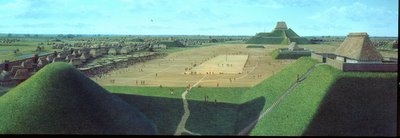
I was fortunate to visit the
Cahokia Mounds State Historic Site in Illinois last weekend. It is a few miles away from St. Louis. The illustration above, based on the mural at the Interpretive Center, shows the largest pyramid and central plaza of the town, as it is imagined to have existed at its zenith about the year 1100. Notice the stockade, two miles long, that surrounded this central portion of the town.
Cahokia Mounds is one of only twenty (20) UNESCO World Heritage sites in the United States (including two sites jointly administered with Canada). (
Click here for the National Parks Service website for the sites.) It proudly flies the UN flag, to indicate it is
a UNESCO World Heritage Site.
According to
TheSalmons.org, "Cahokia is the largest pre-Columbian settlement north of Mexico. It was occupied primarily during the Mississippian period (800-1400). It is an example of a complex agricultural chiefdom society, with many satellite mound centers and numerous outlying hamlets and villages."
The site includes the largest prehistoric earthwork in the Americas (shown above). This is a structure comparable in size to the great pyramid of Egypt and the Pyramid of the Sun in Teotihuacán, Mexico. Called "Monks Mound" (after the Trappist monks who settled the site in the 19th century) it covers 14 acres, rises 100 feet, and was originally topped by a massive 5,000 square-foot building another 50 feet high.
Monk's Mound was the largest of 120 earthen mounds built over an area of six square miles. (Only 80 survive today.) The builders of this city moved some 55 to 60 million cubic feet of earth, using only woven baskets, to create their network of mounds and community plazas.
Woodhenge, partially restored on its original site, was a circle of large wooden posts more than 400 feet in diameter. While its full significance is not understood, some of the posts appeared to mark the winter and summer salstices and the fall and spring equinoxes. The town was built in a diamond shape, marked out by large mounds at the corners, and suggesting surveying abilities even beyond those demonstrated by the central plaza and its edifices.
By AD 1050-1150, the Cahokia site was the regional center for the Mississippian culture with many satellite communities, villages and farmsteads for hundreds of miles around it. At is peak, it is estimated to have had some 20,000 inhabitants, making it larger at the time than Paris or London.
It was the center of a trading network that extended to Wisconsin in the north, Florida in the south-east, and Mexico in the south-west. It was a farming community, growing corn, squash, Jerusalem artichokes and other crops in the rich soil of the Mississippi river bottoms. The inhabitants added meat and fish to their diet by hunting and fishing.
The society that built this city was sophisticated, with a mastery of trade, agriculture, building and other technology, and indeed some scientific knowledge! It was a complex, stratified society.
After AD 1200, the population began to decline and the site was abandoned by AD 1400. It is not clear what happened to the descendents of the Mississippian culture, but it is believed that some still preserved traditions of their forefathers into historic times, allowing them to be recorded by early European explorers.
The Cahokia Mounds Interpretive Center is beautifully organized, in a fine building, and provides examples of the sophisticated pottery and stone artifacts found at the site, as well as exhibits eplaining the way the original inhabitants of the site lived.
I was amazed to learn that only a very small portion of the site has been explored by professional archaeologists, and much of the archaeology that has been done was rescue archaeology. Thus, major excavations were done
when a highway was built through the site, and when the Interpretive Center was built.
We visited the site on a very cold day, and there were very few other visitors. Given the importance of this site, its extremely interesting "mounds", and its proximity to a large city (that was hosting the Annual Meeting of the American Association for the Advancement of Science at the time), I would have expected many more people on a clear, weekend morning.
This is not a national park nor a national monument. Much of the area of archaeological interest is not protected, and there is even an abandoned modern building on the site. This should be an important economic asset for the local community, drawing visitors not only from the United States, but from other countries. It does not seem to be adequately developed, nor adequately publicized for such a purpose. Indeed, I think all Americans should know of this site, but I suspect very few do.
Were it not for having been recognized by UNESCO in 1982 as an important part of the world's heritage, this site might be still less known and appreciated in the United States. That would be unfortunate, because it is a site that sheds significant light on our history and culture!
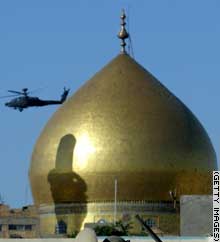 Askariya Before the Bombing
Askariya Before the Bombing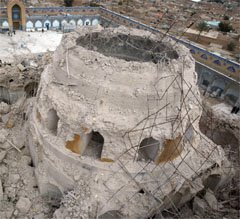


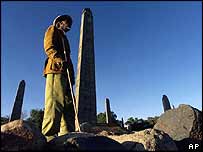


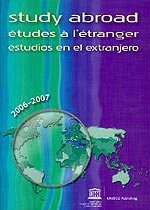
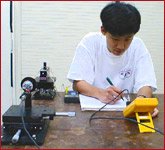 John Yoon, physics student at Ward Melville High School in Setauket, NY (USA) / © Stony Brook University
John Yoon, physics student at Ward Melville High School in Setauket, NY (USA) / © Stony Brook University